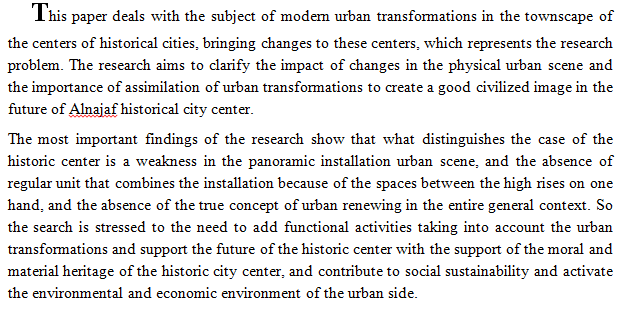
In this research the natural frequency of a cracked simple supported beam (the crack is in many places and in different depths) is investigated analytically, experimentally and numerically by ANSYS program, and the results are compared. The beam is made of iron with dimensions of L*W*H= (0.84*0.02* 0.02m), and density = 7680kg/m3, E=200Gpa. A comparison made between analytical results from ANSYS with experimental results, where the biggest error percentage is about (7.2 %) in crack position (42 cm) and (6 mm) depth. Between Rayleigh method with experimental results the biggest error percentage is about (6.4 %) for the same crack position and depth. From the error percentages it could be concluded that the Rayleigh method gives
... Show MoreIn this work, the effect of vortex shedding on the solar collector performance of the parabolic trough solar collector (PTSC) was estimated experimentally. The effect of structure oscillations due to wind vortex shedding on solar collector performance degradation was estimated. The performance of PTSC is evaluated by using the useful heat gain and the thermal instantaneous efficiency. Experimental work to simulate the vortex shedding excitation was done. The useful heat gain and the thermal efficiency of the parabolic trough collector were calculated from experimental measurements with and without vortex loading. The prototype of the collector was fabricated for this purpose. The effect of vortex shedding at different operation condition
... Show MoreThis work has been done with using of epoxy resin mixed with Granite powder were weighted by percent volume (5,10,15, and 20)%and then mixed with epoxy polymer to compose polymer composite. Hand lay-up technique is used in fabrication of the composite samples. Hardness test was carried out for the proper samples in both normal condition and after immersion in HCL (1 M and 2 M) solutions for periods ranging up to 10 weeks. After comparing the results between the polymer and their composite, the hardness increased with increasing Granite weight percent, it was found that Hardness were greater for the composites before immersion compared with their values after immersion.
In this research, hand lay- up technique is used to prepare samples from epoxy resin reinforced with multi- walled carbon nanotubes in different weight fractions (0, 2, 3, 4, 5) wt%. The immersion effect by sodium hydroxide solution (NaOH) at normality (0.3N) for a period of (15 days) on the thermal conductivity of nanocomposites was studied, and compared to natural condition (before immersion). The thermal conductivity of epoxy nanocomposites specimens were carried out using Lee’s disk method. The experimental results showed that thermal conductivity increased with increase weight fraction before and after immersion for all specimens, while the immersion effect leads to decrease thermal conductive values compared to thermal conductivi
... Show MoreZSM-5 zeolite was synthesis under hydrothermal conditions at 175oC. The synthesis parameters have been investigated to find optimum synthesis method. Firstly, the crystallization time has been investigated to find the optimum crystallization time. Also, the ageing time was studied. The morphology, structure, and composition of the synthesized ZSM-5 zeolite were characterized using scanning electron microscopy (SEM), pH meter, viscometer, and X-ray powder diffraction (XRD). The bulk Si/Al ratio of ZSM-5 zeolite was in the range of 9.5—11.7. The synthesized ZSM-5 zeolite with appropriate ageing time could adjust crystal size and degree of the crystallinity. The crystal size of ZSM-5 zeolite obtained at an agei
... Show More (2)
(2)
Many of the elementary transformations of determinants which are used in their evaluation and in the solution of linear equations may by expressed in the notation of matrices. In this paper, some new interesting formulas of special matrices are introduced and proved that the determinants of these special matrices have the values zero. All formulation has been coded in MATLAB 7.
Simplification of new fashion design methods
